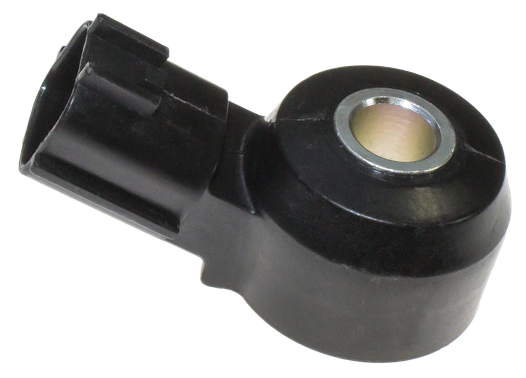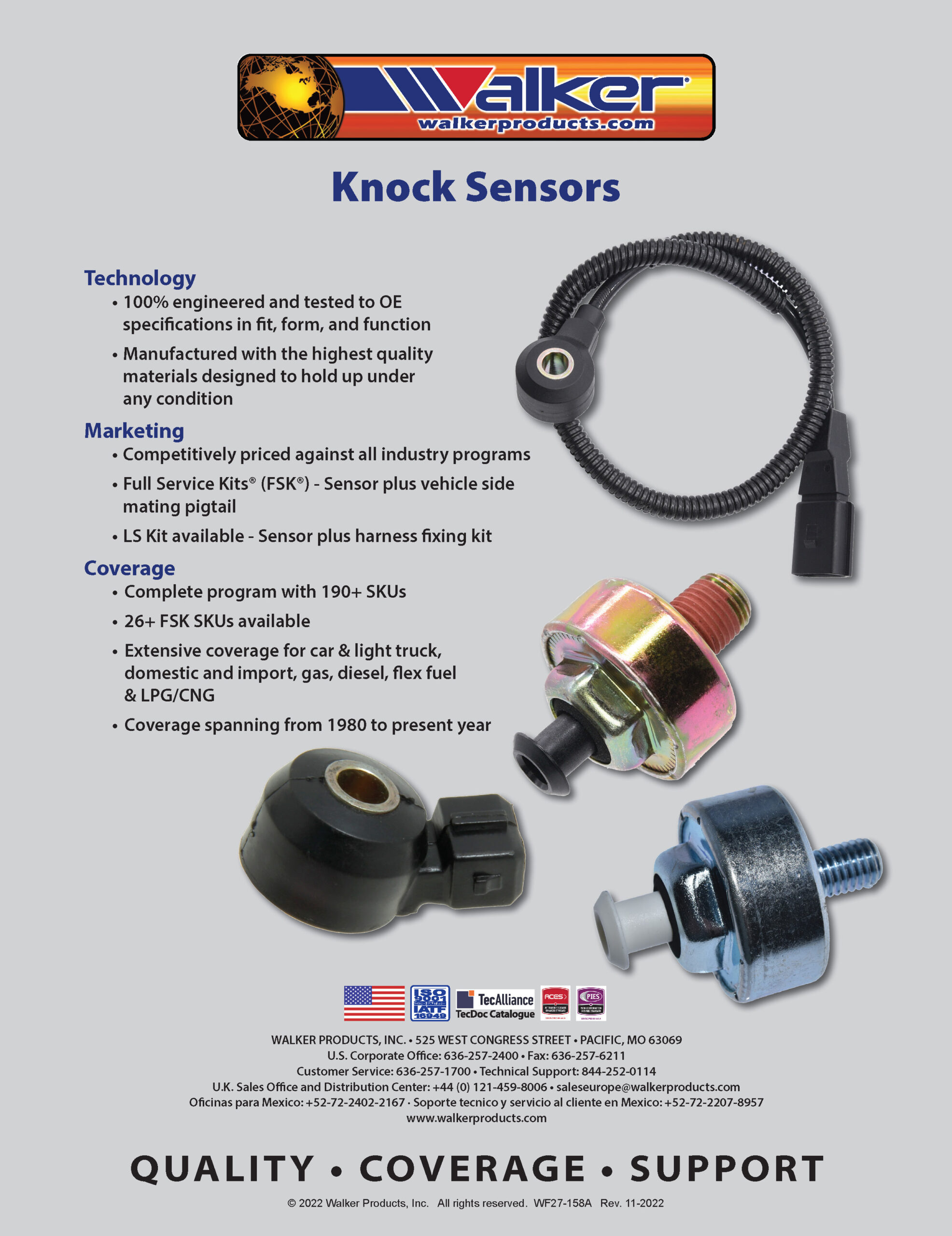Knock Sensors

Knock Sensors (KS) are sensors that detect engine block vibrations caused from engine knock and sends a signal to the vehicles onboard computer to retard engine timing. The knock sensor is located on the engine block, cylinder head, or intake manifold and is used to sense vibrations caused by engine knock or detonation. The vehicle’s onboard computer (Powertrain Control Module [PCM] or Engine Control Unit [ECU]) uses this signal to alter the ignition timing and prevent detonation. It compares this information with its preset tables to identify a valid knock or ping.
Common causes of Knock Sensor failure:
• Dropping sensor or handling roughly
• Incorrect removal
• Wiring harness issues
• Contamination by oil or antifreeze
• Cracking from thermal cycles
Symptoms of failing Knock Sensor may include:
• Engine knocking sound
• Loss of power
• Check Engine Light on
The following OBD II error codes are the most commonly found with this product type. On-Board Diagnostic (OBD) systems are integrated into the computers of our vehicles to monitor emissions. The first generation of OBD requirements was implemented in California in 1988. Since then, these requirements were adopted by the US EPA for all passenger vehicles manufactured after 1996. In 2005, OBD systems then also became mandatory for heavy-duty vehicles and engines up to 14,000 lbs. GVWR. In 2008 the EPA finalized OBD regulations for 2010 and later heavy-duty engines used in highway vehicles over 14,000 lbs. GVWR and made changes to the OBD requirements for heavy-duty applications up to 14,000 lbs. GVWR to align them with requirements for applications over 14,000 lbs. GVWR.
OBD II is now the standard in diagnosing vehicle emissions in. The codes listed for this product type are common instances that may relate to your vehicle and should be used as a guide only. Walker Products will not be held responsible for any use of this information. It is highly suggested that you consult with a professionally trained mechanic prior to any automotive repair, and that you follow all vehicle manufacturer and EPA guidelines for removal, replacement, diagnostics, OBD II code clearing, ECU and PCM relearn procedures.
o P0324 Knock Control System Error
o P0325 Knock Sensor 1 Circuit
o P0326 Knock Sensor 1 Circuit Range/Performance
o P0327 Knock Sensor 1 Circuit Low
o P0328 Knock Sensor 1 Circuit High
o P0329 Knock Sensor 1 Circuit Intermittent
o P032A Knock Sensor 3 Circuit
o P032B Knock Sensor 3 Circuit Range/Performance
o P032C Knock Sensor 3 Circuit Low
o P032D Knock Sensor 3 Circuit High
o P032E Knock Sensor 3 Circuit Intermittent
o P0330 Knock Sensor 2 Circuit
o P0331 Knock Sensor 2 Circuit Range/Performance
o P0332 Knock Sensor 2 Circuit Low
o P0333 Knock Sensor 2 Circuit High
o P0334 Knock Sensor 2 Circuit Intermittent
o P033A Knock Sensor 4 Circuit
o P033B Knock Sensor 4 Circuit Range/Performance
o P033C Knock Sensor 4 Circuit Low
o P033D Knock Sensor 4 Circuit High
o P033E Knock Sensor 4 Circuit Intermittent
o P06B6 Internal Control Module Knock Sensor Processor 1 Performance
o P06B7 Internal Control Module Knock Sensor Processor 2 Performance
o P2336 Cylinder 1 Above Knock Threshold
o P2337 Cylinder 2 Above Knock Threshold
o P2338 Cylinder 3 Above Knock Threshold
o P2339 Cylinder 4 Above Knock Threshold
o P2340 Cylinder 5 Above Knock Threshold
o P2341 Cylinder 6 Above Knock Threshold
o P2342 Cylinder 7 Above Knock Threshold
o P2343 Cylinder 8 Above Knock Threshold
o P2344 Cylinder 9 Above Knock Threshold
o P2345 Cylinder 10 Above Knock Threshold
o P2346 Cylinder 11 Above Knock Threshold
o P2347 Cylinder 12 Above Knock Threshold


